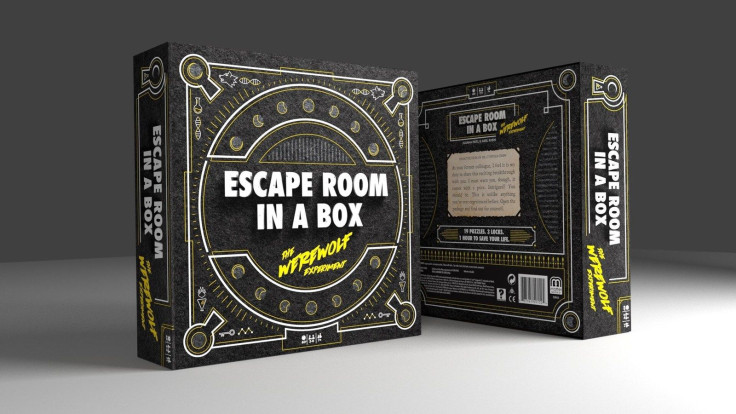Escape Room games have become staples in major cities around the world. The problem with escape rooms, though, is they require you to actually visit them. If you’re further afield, now there’s Escape Room In A Box: The Werewolf Experiment.
Featuring 19 puzzles that must be completed in under an hour, Escape Room In A Box: The Werewolf Experiment comes with three locked containers and a series of clues to open them. There’s plenty more in the box, but to preserve the puzzles, these items will be for you to find.
Play starts when the leader of a group reads the first letter found at the top of the box. This kickstarts the hour countdown timer and releases the “werewolf toxin” players have been exposed to. The antidote just happens to be in one of the locked containers, and picking the lock or using brute force will render the antidote useless. The theming is a bit hokey, but it’s probably fun for kids, and isn’t too bad for adults after a drink or two either.
While the story isn’t the best, the puzzles in The Werewolf Experiment are challenging, but rewarding once you figure them out. Things start a little slow with two basic, familiar puzzles, but quickly dive into the new and strange. There are also always a number of puzzles to solve at once, so people can split into smaller groups to work more efficiently.
While a few puzzles are simply writing words down on paper, others are more physical. I don’t want to spoil any answers, but there was an incredible moment with a pencil that had our group cheering once we figured it out and saw the results. Also, everything inside the box manages to be relevant in some way, which was a pretty cool to see.
There are some shortcomings, however. The biggest is The Werewolf Experiment is largely a one-time use game. There are PDFs players can print out to reset certain puzzles, but once you know the answers, there’s no mystery. There is a host script to download if you have already completed it, but want to show the game to a new group of friends. That said, $30 for a one-time use game is way cheaper than taking a family out to the movies.
The second issue, and I know this sounds obvious, is players are given every opportunity to do so, but can’t cheat. Even if it’s on accident! After the first 15 minutes have passed, players are awarded a hint book, giving away clues to just about every puzzle. Each group is allowed three hints, so make sure your eyes don’t quickly dart to another page. The locks used on the boxes are also made of plastic, and we accidentally opened two locks early without meaning to. Basically, don’t touch anything unless you have an idea what to do with it.
There was also a puzzle that, once we were done, really didn’t serve any purpose for the rest of the game. It was kind of a buzzkill to realize it didn’t even matter in the end. That said, the easier time-killer puzzles are great for kids if they want to play along and still contribute to the team.
The Werewolf Experiment is a great difficulty level, though. We had five or six dedicated people playing at any given time, and we were only outright stumped once or twice. We also finished with around 16 minutes left, having used two of our hints from the hint book. If it were any harder, some might have tuned out or pushed harder to use the hint book. On the flip side, it it were any easier, it wouldn’t have been as fun or satisfying to solve.
Escape Room In A Box: The Werewolf Experiment will release on Dec. 18, but is available for pre-order right now on Amazon. With the holidays coming up, it’s a great way to spend an hour with friends and family.
So what do you think? Are you interested in seeing if you can solve The Werewolf Experiment yourself? Have you played any of the other at-home versions of escape room games? Let us know your thoughts in the comments section below


















